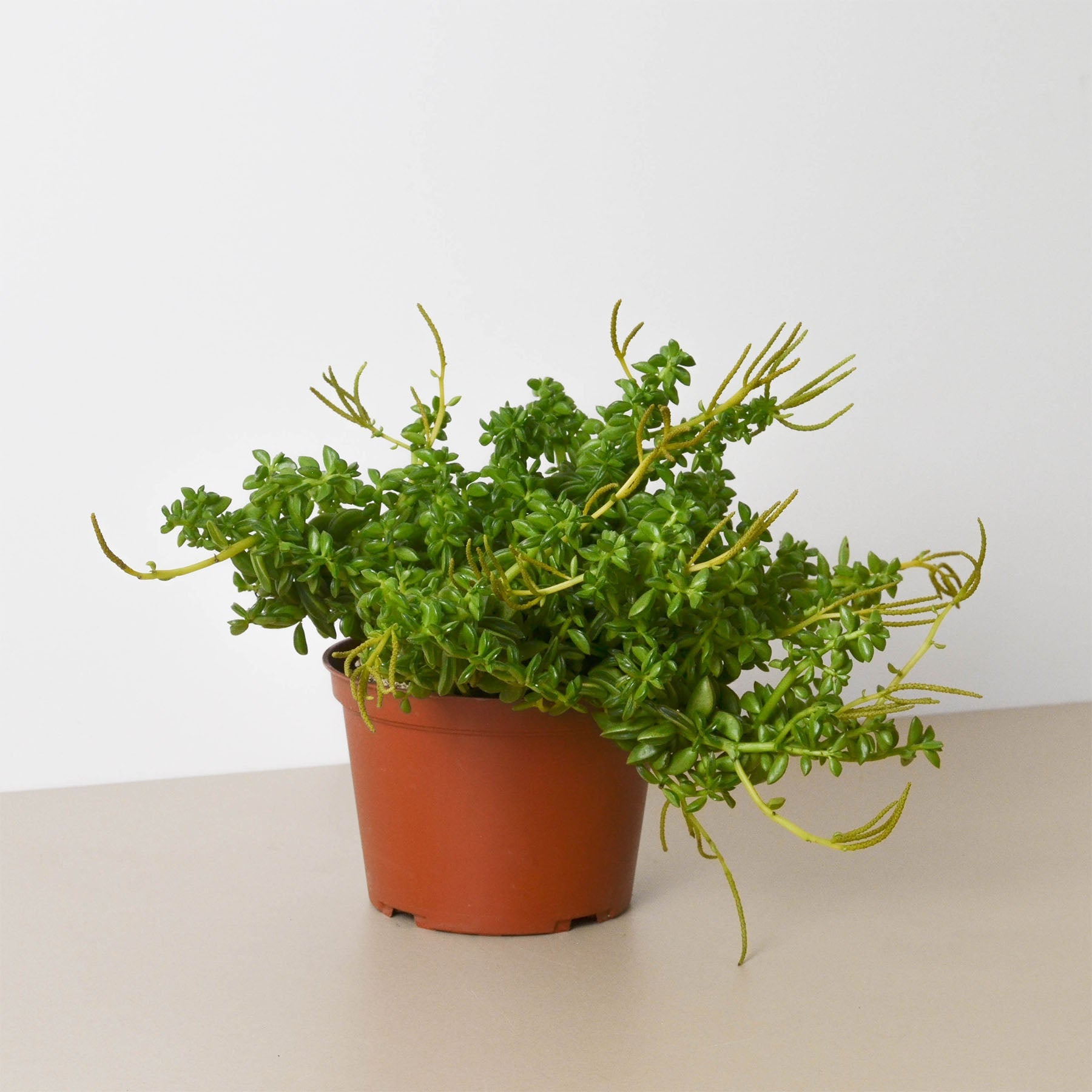Description | Alocasia Tiny Dancer
Overview
The Alocasia 'Tiny Dancer' stands out with its distinctive, playful foliage that seems to dance on slender stems. This compact variety, perfect for indoor plant enthusiasts and small spaces, offers a refreshing deviation from the typical large-leaf Alocasia varieties. Its unique leaf posture and petite size make it an intriguing addition to any plant collection, inviting curiosity and admiration.
Appearance
The 'Tiny Dancer' boasts a collection of small, heart-shaped leaves that perch elegantly on thin, flexible stems. The leaves, with their light green hue and glossy finish, appear to reach upwards as if capturing the essence of a tiny dancer in motion. This plant typically grows to about 12-18 inches tall, making it an ideal choice for tabletops, shelves, or small corners craving a touch of greenery.
Identification
Alocasia 'Tiny Dancer' can be easily identified by its diminutive stature and the unique orientation of its leaves. Unlike its larger relatives, this variety maintains a compact form with closely spaced leaves that vertically orient themselves, creating a visually striking display.
Unique Attributes
One of the most captivating features of the Alocasia 'Tiny Dancer' is its growth habit. The leaves seem to 'dance' as they grow, moving from a tight upright position to a more open, expressive posture as they mature. This dynamic growth adds a lively element to the plant's appearance, making it a living piece of art.
History and Origin
The Alocasia Tiny Dancer is a relatively new cultivar in the botanical world, created to offer plant lovers a more manageable version of the typically large and space-demanding Alocasia species. It was bred for its compact size and unique leaf formation, making it an ideal choice for indoor gardening. The name Tiny Dancer aptly reflects its delicate and graceful appearance, reminiscent of a dancer in motion.
Care Instructions
Light Requirements
Prefers bright, indirect sunlight. Avoid direct sunlight, which can scorch its delicate leaves.
Watering
Keep the soil consistently moist but not waterlogged. Water when the top inch of soil feels dry to the touch.
Soil and Fertilization
A well-draining, peat-based potting mix is ideal. Fertilize monthly during the growing season with a balanced, liquid fertilizer diluted to half strength.
Temperature and Humidity
Thrives in warm, humid conditions. Aim for temperatures between 60-75°F (15-24°C) and increase humidity levels with a pebble tray or humidifier.
Pruning and Maintenance
Remove any yellowing or damaged leaves to encourage new growth. Dust the leaves regularly to ensure efficient photosynthesis.
Companion Plants
Choosing the right companion plants can make your space a lush, healthy haven, enhancing the beauty and vitality of your garden. Opt for plants with similar light and humidity preferences to ensure they grow harmoniously together. This thoughtful selection not only enriches the visual appeal of your space but also contributes to a balanced and supportive environment where each plant can thrive.
 Sold out
Sold out Sold out
Sold out Sold out
Sold out










